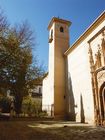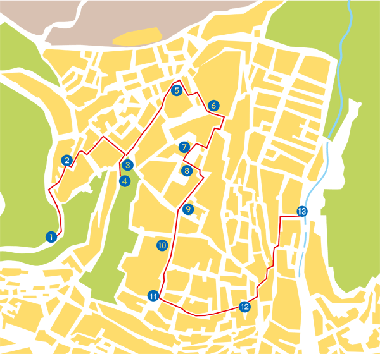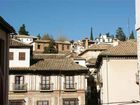
Albaicín, legendary district of Granada.
This route makes up the next itinerary through the Granadinan district of the Albaicin,a fascinating area on a hill facing the Alhambra: Mirador of St Cristobal; Plaza and Iglesia of San Bartolomé; Muralla Zirí-Puerta Nueva (Arco de las Pesas); Colegiata and patio of Salvador; Puerta of Bib-al-Bonud- Mezquita Nueva; Mirador of San Nicolás; Casa Museo of Max Moreau; Convento of Santa Isabel la Real; Alminar of la Iglesia de San José; El Maristán; El Bañuelo and la Puerta de los Tableros. According to the latest archaeological digs carried out in the Albaicin, one of the districts with most charm in Granada, the hypothesis seems to be confirmed that it was raised up over the old Roman Iliberis. The excavations carried out near "La Puerta Nueva" or "El Arco" de las Pesas in the Placeta de las Minas, situate in this area the forum of that first city. In this district, so profoundly typical of Granada, which extends over a hill in front of the Alhambra, its streets and squares preserve their Arabic plan; not in vain did the Ziri monarchs establish here their court or Alcazaba in the eleventh century, of which there are remains of the wall and the gateways of the Arco de las Pesas, Puerta Monaita and Puerta Elvira. When Mohamed Ben Alhamar established his Nazarene kingdom in Granada in 1283, the district continued being the heart of a city which reached a splendour unequalled in the next two and half centuries.Compared to the regal excellencies of the Alhambra the Albaicin depicts the urban essence of the Andalucian town. A district which is ancient and living at the same time, blessed with a powerful personality, it forms an itinerary in which the traveller will feel transported to other times.He or she will find for example, in El Bañuelo, the arab baths of Nogal or the hammam Al Gauza, valuable architectural traces of the Ziri Granada of the eleventh century. Wandering among old minarets such as that of St José, in its charming tangle of steep narrow streets, tiny squares, houses and walled gardens, churches which were once mosques, convents and fortification walls, artisans workshops and popular style taverns, one may discover the most genuine flavours of Granada. The itinerary cannot come to an end without a visit to the Plaza Mirador of San Nicolás from which one may survey the most beautiful panoramic view of the Alhambra, which rises up from the sister hill, with the Sierra Nevada as a backdrop. This view has been the source of inspiration of many painters and photographers and is one of the best known and most often reproduced images of Granada.
|




 Ayuntamiento de Granada
Ayuntamiento de Granada





